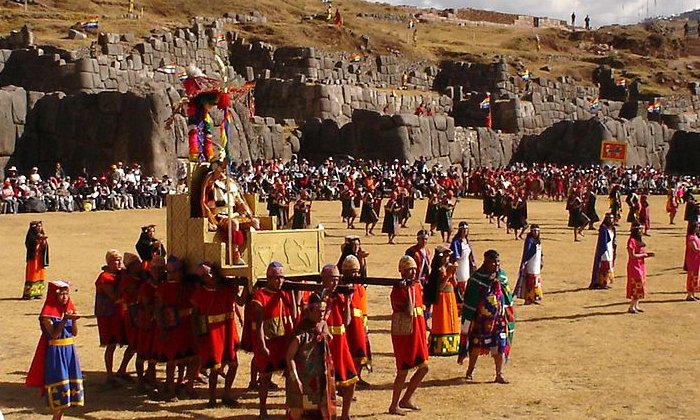What Was Inti Raymi And Why Was It Celebrated By Inca?
Conny Waters - AncientPages.com - Inti Raymi is Inca’s Sun Festival, traditionally celebrated at Cuzco on June 24, which marks the winter solstice, the shortest day of the year - the Inca New Year (in regions south of the equator, the Gregorian months, June and July are winter months.)
Inti Raymi (Festival of the Sun) at Sacsayhuaman,Cusco. Image credit: Cyntia Motta - CC BY-SA 3.0
It is an ancient Inca religious celebration of "The Inti or Sun." Formerly, the Inti Raymi lasted about 15 days, and the last one —carried out in the presence of the Inca Emperor—was in 1535, one year before ¨The Spanish Conquest¨ in 1536.
Today, it is a theatrical representation. Thousands of Cuzco and people from all over the world come together to this event, one of the most important cultural and traditional manifestations in this part of the world.
According to this ancient tradition, the Inca honored the beginning of the new solar year, a time when the Sun comes back to provide warmth for all life. It is the rebirth of the Sun, the Inca royalty, and the mythical origin of the Inca people.
Inti Raymi comes from the Quechua language: inti means “sun” and raymi means “festival.”
During the Inca Empire, only Inca males were allowed to participate in the festival. During the festival, offerings were made to the Sun, Viracocha, and the thunder god. The participants made many wooden statues dressed in fine clothes; at the end of the festival, the statues were burned.
The rituals associated with Inti Raymi are still performed and occur in front of huge crowds on this particular day each June at Cuzco, Peru.
The ancient fortress-ruins of Sacsayhuaman, in the hills overlooking the city, are filled that day with a very special atmosphere of Andean music, dance, a simulation of animal sacrifice (which originally served as an offering to the Sun God), parades, and ceremonies in the ancient Quechua tongue.
The lead figure is "The Inca" - the Emperor, supreme ruler of the Incan Empire. Carried on a platform and dressed in regal red and gold, the Emperor leads the ceremony with gestures and incantations to the Sun. During the festival, 500 actors representing Inca nobility are dressed in traditional clothes adorned with silver and gold. One actor portraying the Sapa Inca blesses the ceremony and speaks in the native language, Quechua, to honor the Sun.
According to Spanish chronicler, soldier, and poet Garcilaso de la Vega, the festival Inti Raymi was created by the ninth Sapa Inca Pachacuti in 1412 and lasted for nine days.
The last Inti Raymi with the Inca Emperor's presence was carried out in 1535, after which the Spanish and Catholic priests banned it for many years at least.
Little is known about the details of the Inti Raymi celebration, and most of what we see today is pieced together from archaeological findings, memories, and practices passed on from one generation to another to keep the ancient traditions alive.
As Quechua is not a written language, there are no written records of the rituals' origins. Among South American greatest celebrations, Inti Raymi is the second only to the festival in Rio de Janeiro.
Updated on June 1, 2024
Written by Conny Waters - AncientPages.com Staff Writer
Copyright © AncientPages.com All rights reserved. This material may not be published, broadcast, rewritten or redistributed in whole or part without the express written permission of AncientPages.com
Expand for referencesMore From Ancient Pages
-
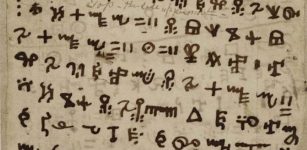 Vai Script – Rare African Manuscript Offers Clues Into How Writing Evolved
Archaeology | Jan 11, 2022
Vai Script – Rare African Manuscript Offers Clues Into How Writing Evolved
Archaeology | Jan 11, 2022 -
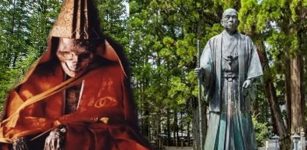 What Was The Extreme Ritual Of Sokushinbutsu?
Ancient Traditions And Customs | Jun 20, 2018
What Was The Extreme Ritual Of Sokushinbutsu?
Ancient Traditions And Customs | Jun 20, 2018 -
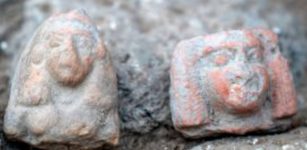 Remains Of 3,400-Year-Old Canaanite Citadel Unearthed In Nahariya, Western Galilee
Archaeology | Jan 6, 2016
Remains Of 3,400-Year-Old Canaanite Citadel Unearthed In Nahariya, Western Galilee
Archaeology | Jan 6, 2016 -
 The Vinland Map Is A Fake – New Evidence Uncovered By Scientists
Archaeology | Sep 21, 2021
The Vinland Map Is A Fake – New Evidence Uncovered By Scientists
Archaeology | Sep 21, 2021 -
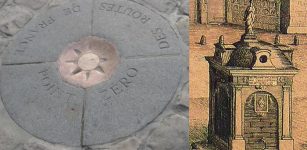 Paris Point Zero And The Mysterious Statue Of Monsieur Legris
Featured Stories | Dec 4, 2018
Paris Point Zero And The Mysterious Statue Of Monsieur Legris
Featured Stories | Dec 4, 2018 -
 Remarkable Man-Made Underwater Structures Could Rewrite History Of Wisconsin
Featured Stories | Aug 22, 2018
Remarkable Man-Made Underwater Structures Could Rewrite History Of Wisconsin
Featured Stories | Aug 22, 2018 -
 Monumental Totem Poles Of Native American People Tell Stories Of Ancestors
Featured Stories | May 22, 2017
Monumental Totem Poles Of Native American People Tell Stories Of Ancestors
Featured Stories | May 22, 2017 -
 Ancient Inscriptions Of Babylonian King Nabonidus Discovered In Saudi Arabia
Archaeology | Jul 14, 2021
Ancient Inscriptions Of Babylonian King Nabonidus Discovered In Saudi Arabia
Archaeology | Jul 14, 2021 -
 Hundreds Of Fascinating 24,000-Year-Old Cave Paintings Discovered In Eastern Iberia
Archaeology | Sep 11, 2023
Hundreds Of Fascinating 24,000-Year-Old Cave Paintings Discovered In Eastern Iberia
Archaeology | Sep 11, 2023 -
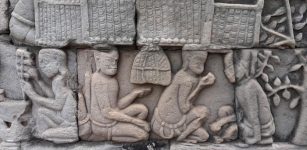 What Can The Fate Of Ancient Cities Teach Us About Surviving Climate Change
Archaeology | Oct 1, 2021
What Can The Fate Of Ancient Cities Teach Us About Surviving Climate Change
Archaeology | Oct 1, 2021 -
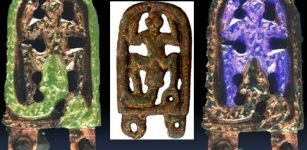 Unique Medieval Bronze Buckle Of A Snake Devouring A Frog-Like Creature Found In Brno, Czech Republic
Archaeology | Dec 13, 2023
Unique Medieval Bronze Buckle Of A Snake Devouring A Frog-Like Creature Found In Brno, Czech Republic
Archaeology | Dec 13, 2023 -
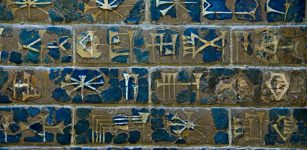 Ishtar Gate, The Eighth Gate Of The Inner City Of Babylon
Civilizations | Sep 6, 2015
Ishtar Gate, The Eighth Gate Of The Inner City Of Babylon
Civilizations | Sep 6, 2015 -
 8,600-Year-Old Bone Needles Found In Denizli Closely Associated With Old Textile Tradition
Artifacts | Sep 2, 2020
8,600-Year-Old Bone Needles Found In Denizli Closely Associated With Old Textile Tradition
Artifacts | Sep 2, 2020 -
 Amazing Victorian Time Capsule – 135-Year-Old Message In A Bottle Found In Edinburgh
Archaeology | Nov 22, 2022
Amazing Victorian Time Capsule – 135-Year-Old Message In A Bottle Found In Edinburgh
Archaeology | Nov 22, 2022 -
 Legendary Hiram Abiff – Master And Chief Architect Loved By Few And Hated By Many Including King Solomon
Featured Stories | Jan 27, 2019
Legendary Hiram Abiff – Master And Chief Architect Loved By Few And Hated By Many Including King Solomon
Featured Stories | Jan 27, 2019 -
 Izanagi and Izanami And World Creation In Shinto Cosmology
Featured Stories | Mar 28, 2019
Izanagi and Izanami And World Creation In Shinto Cosmology
Featured Stories | Mar 28, 2019 -
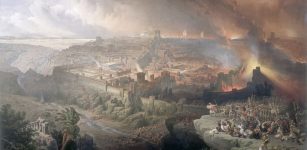 On This Day In History: Siege of Jerusalem: Titus And His Legions Breach The Middle Wall Of The City – On June 5, 70 CE
News | Jun 5, 2016
On This Day In History: Siege of Jerusalem: Titus And His Legions Breach The Middle Wall Of The City – On June 5, 70 CE
News | Jun 5, 2016 -
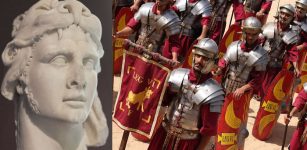 Rome’s Most Wanted Enemy – Poison King Mithradates Murdered 80,000 Roman Civilians
Ancient History Facts | Dec 17, 2017
Rome’s Most Wanted Enemy – Poison King Mithradates Murdered 80,000 Roman Civilians
Ancient History Facts | Dec 17, 2017 -
 Huge Ancient Ceramic Workshop With Hundreds Of Stunning Artifacts Solves An Archaeological Mystery In Israel
Archaeology | Dec 14, 2020
Huge Ancient Ceramic Workshop With Hundreds Of Stunning Artifacts Solves An Archaeological Mystery In Israel
Archaeology | Dec 14, 2020 -
 Unusual Ancient Spider Pipes Of Tennessee – Were They Used By Shamans To Enter The Spirit World?
Artifacts | Feb 18, 2018
Unusual Ancient Spider Pipes Of Tennessee – Were They Used By Shamans To Enter The Spirit World?
Artifacts | Feb 18, 2018

